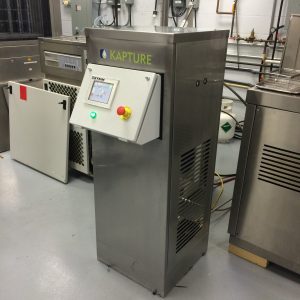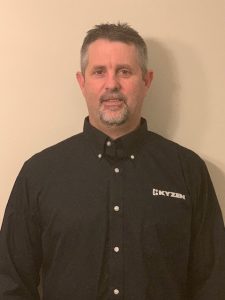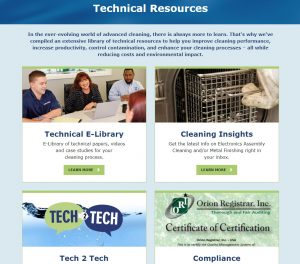The Science Lab

Case Study: Immersion Cleaning of Aluminum Auto Frames M6310
Cleaning Requirements
There are two manufacturers involved at different points along the manufacturing chain of aluminum automobile frames and need to clean the tubular frames prior to coating/hydroforming and after laser cutting.
Situation
There are two automotive parts manufacturers that need to clean automobile frames during different stages of manufacturing. The frames start out as aluminum tubes that are 16 feet long. The first company removes oils and other machining fluids from the tubes in a wash/rinse, then into a two-tank immersion wash system that employs spray under immersion. The cleaned parts are then coated with a dry film stamping compound. The coated tubes are sent to a second company in the manufacturing chain, which hydroforms the tubes into the shape of an automobile frame. A third company then laser cuts the frames prior to sending them on to the automobile assembler. The challenge here was to remove burned-on oils, dry film stamping compounds, and laser burns residues, all while not damaging the aluminum substrates. To add to the difficulty, the cleaning systems are both immersions with agitation and relatively low mechanical energy relative to both ultrasonics and spray-in-air applications.
In 2005, KYZEN engineers visited the customers’ facilities several times to appraise the cleaning/compatibility issues. KYZEN’s Applications Lab conducted cleaning/compatibility testing with the aluminum tube sections. A spray under immersion process was developed which specified cleaning parameters such as cycle time, temperature, and concentration. Several of the KYZEN METALNOX cleaning chemistries performed well in the removal of the various soils. However, Metalnox M6310 was selected as it cleaned effectively and provided protection for the aluminum during the four-minute heated rinse. Without this protection, the tubes would begin to darken from oxidation within two minutes.
Metalnox M6310 is a mild alkaline, engineered cleaning chemistry that is effective on a broad range of industrial soils. It is safe for all metals and provides extended corrosion protection for aluminum and copper-based alloys such as brass and bronze. M6310 is effective in both immersion and spray-in-air cleaning processes is biodegradable and has excellent worker safety properties.
The KYZEN technical team recommended the following process based on the compatibility test findings, and on cleaning test data contained in KYZEN’s vast cleaning test data library which contains cleaning process data for most of the industrial soils/metals encountered in manufacturing operations:
- Engineered Cleaning Fluid: METALNOX M6310
- Wash Concentration: 5-8%
- Wash Temperature: 120-140°F
- Wash Exposure Time: 4 minutes
- Rinse Temperature: 130-140°F
- Rinse Exposure Time: 4 minutes
Results and Conclusion
At the request of the company first in the manufacturing chain, the KYZEN technical staff assisted in the design of the cleaning system which was built and installed to realize production and cleaning needs. The second company in the chain, conducting laser cutting already had a two-stage immersion washer in place using an alternative but was replaced with Metalnox M6310 after testing proved it to be a superior cleaning product.
Members of the KYZEN Technical Services group conducted a plant trial and then assisted in the process of start-up at both companies. Both companies using Metalnox M6310 have realized shorter cleaning process cycle times as well as versatility with other parts cleaning requirements on-site in their respective plants. Metalnox M6310 contains additional components specifically effective on smut, or carbonized soils. KYZEN engineers visit both customers’ facilities frequently to monitor the cleaning systems and help with process optimization.

Process Control & Optimization Series: Kapture Every Drop
An efficient degreasing process requires a clean solvent. This means keeping up with new solvent, maintenance, and hazardous waste disposal costs that quickly add up. The EPA has many of the solvents under heavy regulation and is phasing certain solvents out completely. This should not come as a surprise once you take a look at the price increases!
The big question on everyone’s minds is why? There are several key factors to look at including:
- Global Shortage of Raw Materials
- Logistics Challenges
- Environmental Impact (TSCA)
- Raw Materials Phase-Out
With these challenges facing the solvent world, it is now more important than ever to not waste a reusable solvent. Recycling allows you to save on new solvent purchases, maintenance downtime, hazardous waste disposal, process time, and environmental impact. Whether you are solvent cleaning based on choice or necessity, the best way to go is using a solvent recycling system.
The KYZEN Kapture is an excellent example of a solvent recycling system. The Kapture takes the dirty solvent and removes the soils and retains them in the Kapture vessel. The clean solvent is then returned to the degreaser for re-use! The waste is periodically discharged as needed.
Recycling solvent is not only environmentally friendly, but business friendly as well. When you “Kapture” every drop – everybody wins.
To learn more about Process Control & Optimization click here to watch the T2T or feel free to reach out to a KYZEN team member today.




